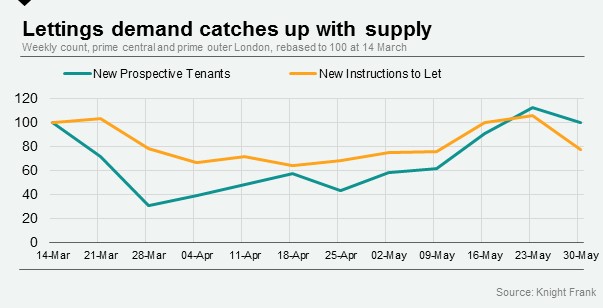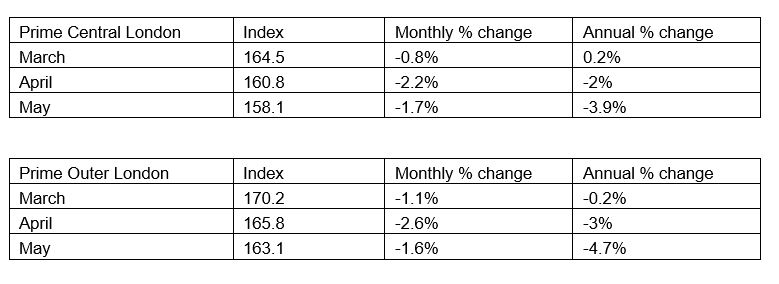Lettings demand rises as lockdown measures are lifted
Demand is expected to strengthen further once there is more clarity on schools re-opening
2 minutes to read
Demand in the prime London lettings market is catching up with supply, reducing short-term downwards pressure on rental values.
The number of new prospective tenants was 4% above the five-year average in the week ending 30 May and the same number as that recorded in the second week of March, before the pandemic impacted property markets.
The number of new lettings properties on the market was more resilient while the property market was subject to lockdown measures. As demand comes back, that imbalance now appears to be reversing, as the chart below shows.
“There was a slight hangover from the lockdown in terms of more lettings properties on the market,” said Gary Hall, head of lettings at Knight Frank. “It still feels like it’s more of a tenants market but we are going into the busiest period of the year and I would expect supply to come down. It’s not in every case, but we are agreeing plenty of deals at the asking rent.”

In a further indication of strengthening demand, the number of web hits for lettings properties has risen significantly since the property market re-opened. The figure was 39% higher than the five-year average in the week ending 30 May.
Demand is expected to strengthen further as there is more clarity surrounding the re-opening of schools, which has caused some tenants to postpone their move, says Gary.
Given the thin trading seen during the lockdown of the property market, Knight Frank has revised our prime London indices downwards for March and April, as the tables below show. This was based on an analysis of achieved rental values over the last 10 weeks, as well as other economic and housing market data.
Average rental values in prime central London fell by 1.7% in May, taking the annual change to -3.9%. Meanwhile, the monthly decline in prime outer London was 1.6% in May, producing an annual decline of 4.7%.
The quarterly decline of 4.7% recorded in May in prime central London is the largest such drop since March 2009, as the market felt the impact of the global financial crisis.
